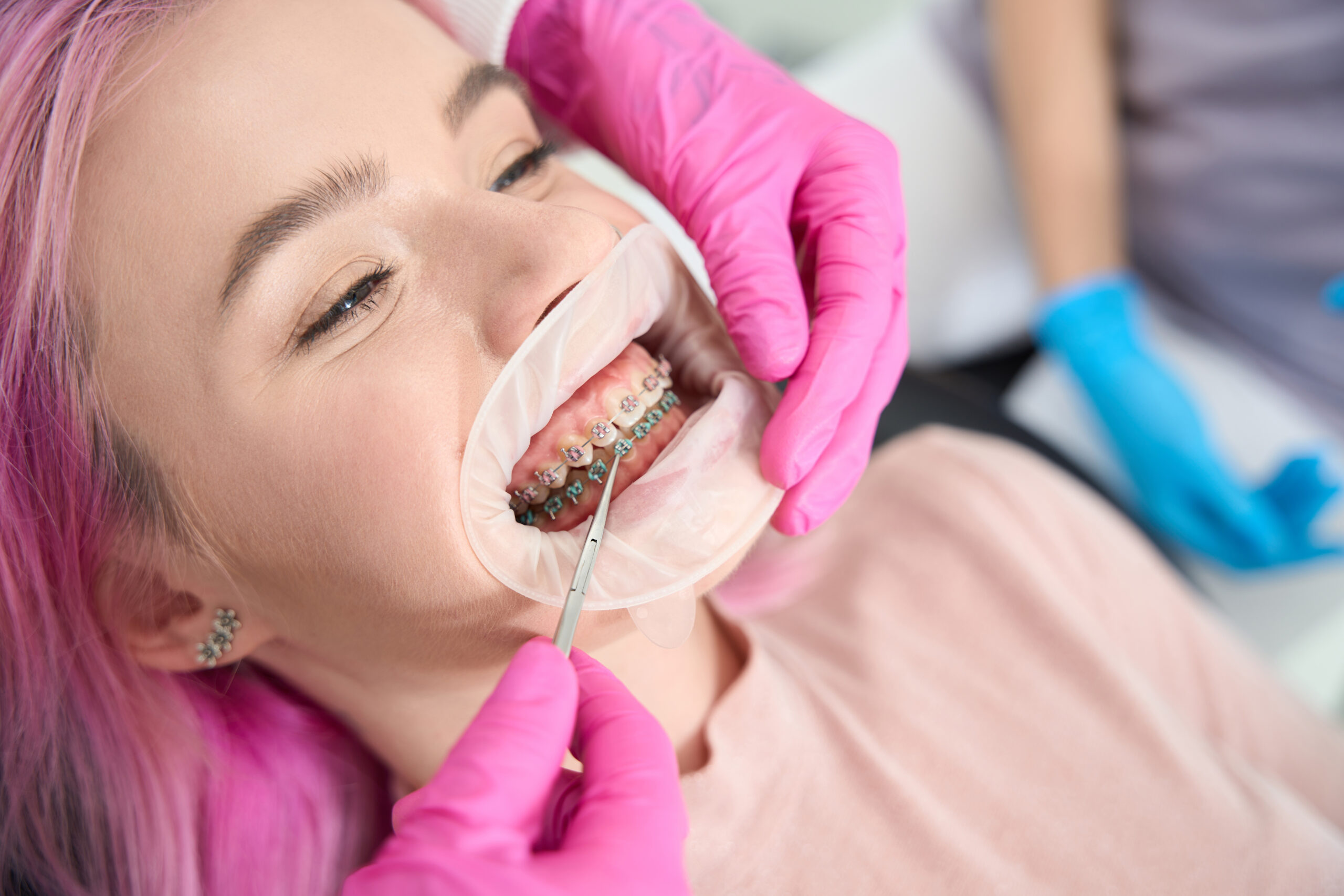Dentist Correcting Misaligned Teeth and Jaws
Orthodontist is a dental specialist who focuses on correcting misaligned teeth and jaws. They diagnose and treat issues such as crooked teeth, overcrowding, overbites, underbites, and jaw misalignment.
Orthodontists use various treatments, including braces and aligners, to improve dental function and create healthy, confident smiles.

If you’ve been considering orthodontic treatment for the first time, you may be feeling a little overwhelmed by the variety of options and terms you’ve heard thrown around. Whether you’re an adult thinking about improving your smile or a parent looking into options for your child, understanding what an orthodontist does and how they can help is an important first step. This guide will answer all your questions, from the basics of what orthodontists do to why it's not just for kids, but adults too!
An orthodontist is a dental specialist who focuses on diagnosing, preventing, and treating dental and facial irregularities. Their primary role is to correct misalignments of the teeth and jaws, improving both the function and appearance of your smile. Orthodontic care is often associated with braces, but orthodontists also use a variety of other treatments, including retainers, clear aligners, and other appliances designed to guide the teeth into better alignment.
An orthodontist can address a wide range of issues, including:
Orthodontists use tools like braces (metal or clear), clear aligners, headgear, and space maintainers to fix these issues and guide teeth and jaws into their ideal positions. A good orthodontist will assess your specific needs and create a treatment plan that works best for you.
When most people think of an orthodontist, they envision children or teenagers getting braces. While orthodontic treatment is often started in childhood or adolescence, orthodontists are highly skilled in treating patients of all ages—yes, even adults!
Children typically start orthodontic treatment between ages 9 and 14, as their jaws are still growing and more easily adaptable. However, adults can benefit from orthodontic care just as much as children. In fact, many adults choose orthodontics later in life to improve the appearance of their teeth or correct alignment issues they’ve lived with for years.
For adults, treatment options have advanced significantly, and you don’t necessarily have to get traditional metal braces. Many adult patients opt for clear aligners, such as Invisalign, which are virtually invisible and can be removed for eating and cleaning. Some adults also choose ceramic braces, which are less noticeable than metal braces, or lingual braces, which are placed on the inside of the teeth.
Orthodontic treatment for adults can correct issues like:
Orthodontists will carefully evaluate your needs and goals, and they’ll help you find a solution that fits your lifestyle and dental health.
You might wonder why you need to see an orthodontist instead of a general dentist for your teeth alignment concerns. While your dentist plays an essential role in maintaining your oral health, orthodontists have specialized training and experience in dealing with complex tooth and jaw issues.
Orthodontic care involves more than just cosmetic improvements—it can also have significant health benefits. Properly aligned teeth and jaws can improve your bite, reduce wear on your teeth, enhance speech, and make it easier to clean your teeth, which can prevent gum disease and tooth decay. Additionally, correcting alignment problems may help reduce stress on your jaw, alleviating issues like TMJ (temporomandibular joint disorder) that can cause pain and discomfort.
Orthodontic treatment is often recommended to:
Correct bite problems (overbite, underbite, crossbite, open bite)
Straighten crooked or crowded teeth
Prevent long-term dental issues related to misalignment
Improve oral hygiene by making teeth easier to clean
Boost confidence with a well-aligned smile
The British Orthodontic Society
The Orthodontic Society of Ireland (OSI)
The European Orthodontic Society
An orthodontist is a dental specialist who focuses on diagnosing, preventing, and treating dental and facial abnormalities, particularly those related to the alignment of teeth and jaws. They use a variety of tools and techniques, including braces, retainers, and other devices, to correct misalignments and improve the appearance and function of the teeth. Orthodontists are trained to address issues such as overbites, underbites, crooked teeth, and jaw problems, helping to enhance both oral health and overall aesthetics.
In the UK, orthodontic treatment may be available for free through the NHS for children and teenagers under 18 if they meet certain medical criteria, such as having a significant misalignment that could cause health issues. For adults, NHS treatment is available, but it’s generally more limited and based on the severity of the problem. Many adults choose to pay for private orthodontic care if they prefer more options or quicker treatment.
While braces are the most common treatment provided by orthodontists, their role extends beyond just fitting braces. Orthodontists also offer other solutions like clear aligners, retainers, and other devices that help with teeth alignment and jaw correction. They can treat a variety of issues related to bite alignment, tooth positioning, and even facial symmetry. So, orthodontists are not just for braces, but for comprehensive treatment to improve both function and appearance of the teeth and jaws.